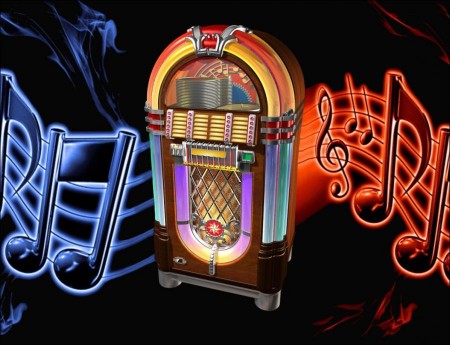Rock and roll, which the industry learned to ride to a staggering new sales volume, also jarred that industry into new patterns: new companies, new small-group recording economics, new audience definitions, and new relationships to radio broadcasting. Some of the story can be told in terms of technical innovations. Television as the surging home entertainment medium turned radio stations toward the disc jockey format of record programming.
New sizes, speeds, and materials for the records themselves may have had wide implications. Belz makes an interesting analysis of the cultural meaning of the shift from 78 to 45 rpm records, as streamlining the experience of recorded music toward casualness, especially for young audiences, while their parents bought the more substantial 33 longplaying records that emerged at the same time in the early 1950s. The later movement of rock and its audience into long-playing records reflects the triumphing cultural and economic power of the same young generation, along with a growing seriousness and self-confidence of the makers of rock music.
The relationship of popular culture to ideology in the 1960s and into the 1970s has become of interest to academic sociology, although the alarmed interest of politicians has given way to accommodation. The relationship of the entertainment favored by highly visible classes of teenagers and young adults to the behavior of that audience, and especially its use of drugs, is probably now still too current an issue for full perspective and confident judgment.
The history of popular music suggests that it is very unlikely that musical entertainment can induce new behavior, or even introduce new ideas to the audience it must court in order to sell itself. Though popular music has been blamed in the past for undermining community standards or otherwise damaging society, it is a new phenomenon for popular music to have the pervasive presence that prosperity and the portable radio and tape deck have given it lately, and for such conspicuous economic power to be vested in a youth audience. The history of popular music that is now happening cannot be fully schematized and managed by the patterns of earlier popular music. Its development has always been contingent, surprising, and even discontinuous except when we rationalize it with hindsight, and it is continuing that unpredictable development now.
As rock has evolved in the last quarter of a century and brought, among other things, self-conscious seriousness to popular music, it has prompted an immense volume of reportage and analysis, much of it empty but some perceptive and judicious. The attention that rock has demanded has occasioned the first widespread, serious critical attention to the popular arts in general. Nostalgia, publicity promotion, and the university environment of a part of the proprietary audience of rock have contributed to the growing critical and scholarly interest in popular music of the past as well as the present. We are in the process of discovering a heritage; it is certain to contribute to the understanding of our own culture.
At the same time, vested interests knew that the teenage market was now too valuable to be put in jeopardy. Part of the answer was Top 40 programýning, which came to the fore in the later 1950s. Besides coping with the separate problem of disk jockeys’ so-called “play-for-pay” deals with record companies, the Top 40 system introduced a measure of control into the music being heard over the air. By a very neat twist, hard promotion turned that controlled segment of available records into something that the teenage market found irresistible.
Related Link: View more Popular Culture stories
Views: 978



